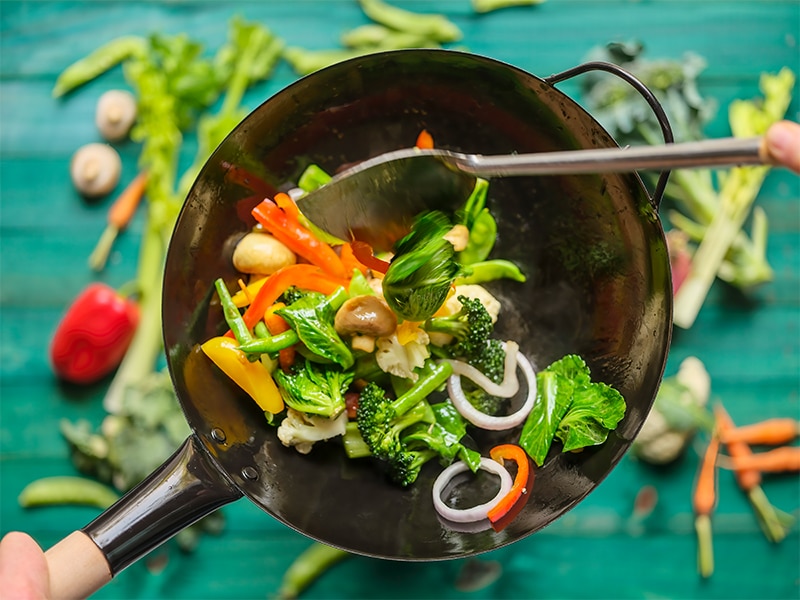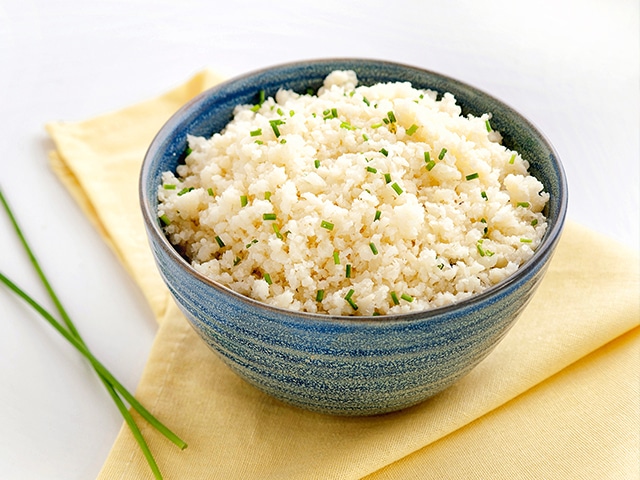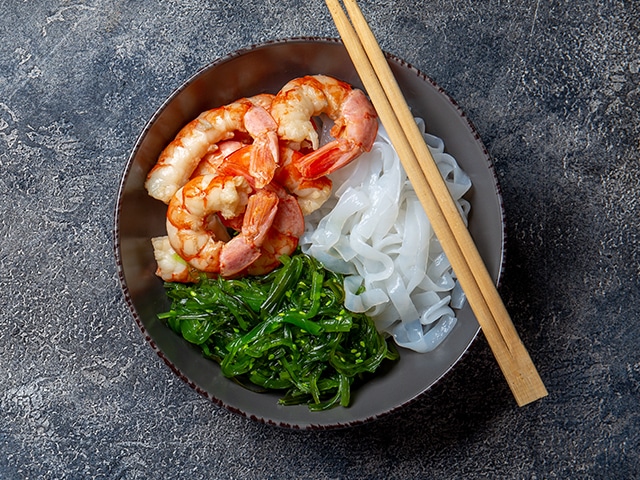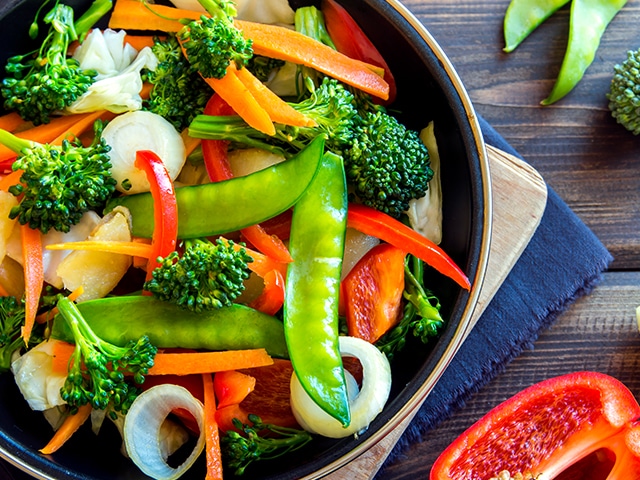Craving some shrimp fried rice from your favorite Asian takeout restaurant? Maybe some pad thai from your neighborhood Thai spot?
Before you pick up the phone or open the delivery app of your choice, you might want to consider some healthy substitutes.
A great way to satisfy your fast-food cravings, without tipping the scale, is to swap out the fatty high-carbohydrate ingredients for more wholesome options.
“Healthier alternatives to our favorites is a really good way to reduce calorie intake and sodium,” says Abby Read, MS, RDN, LD, a wellness coach and program coordinator at Methodist Dallas and Methodist Charlton Medical Centers. “Most weight gain tends to be from bloating and water retention so it’s wise to search for alternate ingredients when you are trying to eat a healthy diet.”
CAULIFLOWER RICE
Let’s use shrimp fried rice as an example. In this takeout favorite, you can easily consume over 320 calories per serving. Many of those calories are from the rice, so why not switch it out for cauliflower rice instead.
Think about it, one cup of cauliflower rice contains about 25 calories and 5 carbs. Some people would even argue it tastes better than traditional rice, and its health benefits can’t be denied.
“There’s a good amount of fiber in cauliflower,” Read says. “Swapping out rice for cauliflower rice is a great way to improve your digestive health.”
THE ZERO CALORIE NOODLE
Noodles are a staple in Asian cuisine, and if you are monitoring your carbs, you’ll want to steer clear of them.
But there is a pasta that doesn’t have any calories or carbs. This miracle noodle, called Shirataki, or “white waterfall,” comes from the Japanese konjac yam.
It’s not all that flavorful, but its chewy texture makes it a perfect substitute for any lo mein or pad thai recipe. They’re easy to make, and you can find them at your local natural grocery store.
PICK A HEALTHIER OIL FOR STIR-FRY
When stir-frying, don’t think of oil as just something you use to prevent your ingredients from sticking to the wok. The oil you choose affects how the meal tastes — and how many calories it contains.
Most of us will use the tried-and-true vegetable oil, but it’s not the healthiest alternative and its ingredients can be a mystery (usually it’s derived from soybeans, safflower, sunflower, and canola).
Consider using extra virgin olive oil, peanut oil for an especially flavorful dish, or even a lesser-known substitute like sesame oil.
Sesame oil is good for heart health, high in antioxidants, and can even help control blood sugar, a boon for diabetes patients. Some studies even suggest it can help ease the effects of arthritis.
DON’T HIT THE SAUCE TOO HARD
What’s Asian food without soy sauce? Well, it can be healthier, for sure.
Soy sauce can be especially high in sodium and gluten, surprisingly enough. That’s because, in addition to fermented soybeans, it contains roasted wheat and yeast culture.
For those worried about the gluten content, consider tamari instead. It’s made without those roasted grains, so it tends to have a stronger flavor.
If you’re looking to avoid soy, try coconut aminos instead. A mainstay for those on a paleo diet, this sauce looks just like soy sauce and provides a milder stand-in for the flavor.
SHORT ON TIME? NO PROBLEM
Making your own meals takes time and thoughtful preparation to be successful. And sometimes our busy schedules just won’t allow that.
But there is a middle ground between takeout and a lavishly prepared meal.
“If you just don’t have the time to cook a full meal at home,” Read says, “you can easily grab pre-cut stir-fry vegetables from the grocery store that you could throw in the microwave and steam.”
Think about pairing your microwaveable stir-fry veggies with ready-to-eat shirataki noodles, which can also be heated in the microwave.
Just cook the noodles in the microwave for a minute, pour your steamed veggies over them, add one of the soy sauce alternatives above, and have dinner served within minutes.






